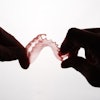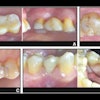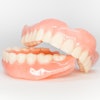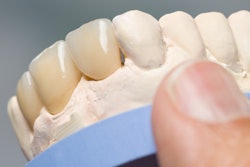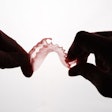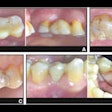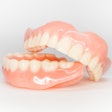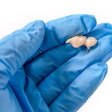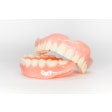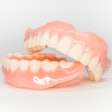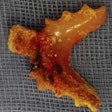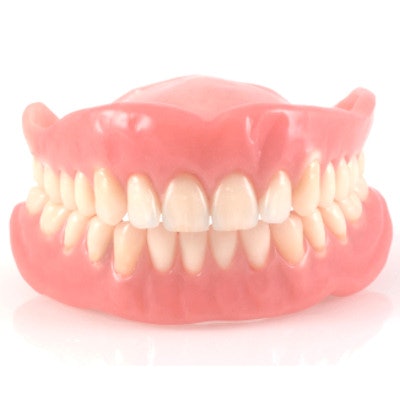
What are the best techniques and materials for making final impressions for complete and removable partial dentures? As there is no clinical consensus, researchers conducted a systematic review of the published literature.
They searched for randomized controlled trials that compared final-impression techniques and materials for producing complete dentures or removable partial dentures. While some study findings suggested slightly better outcomes with certain techniques and materials, the authors found no definitive results indicating that any of them were superior to each other.
"There is no clear evidence that one technique or material has a substantial advantage over another for making complete dentures and removable partial dentures," the authors wrote (Cochrane Database of Systematic Reviews, April 4, 2018).
The lead author was Srinivasan Jayaraman, MDS, from the department of prosthodontics at Al Baha University Faculty of Dentistry in Saudi Arabia.
No clear winner
Multiple steps are involved in making complete and removable partial dentures, and a variety of techniques and materials can be used. Denture retention, stability, support, chewing efficiency, patient comfort, and overall satisfaction all depend on the correct recording of the final impression, the authors noted.
However, there are no evidence-based clinical practice guidelines for making dentures and no systematic reviews and meta-analyses regarding which materials or techniques to use, they wrote.
Therefore, the researchers conducted the current systematic review and meta-analysis of the effects of various final-impression techniques and materials on the following factors:
- Retention, stability, and comfort of complete dentures and quality of life in their wearers
- Stability, comfort, and overextension of removable partial dentures and quality of life in their wearers
Their search included all randomized controlled trials and crossover trials published in any language that related to impression making for complete or removable partial dentures. They examined Cochrane databases and other databases for published medical studies that compared different materials, different techniques, or both.
Ultimately, the researchers included nine studies in their meta-analysis. Eight studies included 485 patients with complete dentures. Of these, they judged six studies to be at high risk of bias and two at low risk. They included one study with 72 patients with removable partial dentures, which they found to be at high risk of bias.
The study participants ranged in age from 45 to 75 years and had been edentulous or partially edentulous for 10 to 35 years. The studies were conducted at dental schools or university hospitals in Japan, Brazil, the U.K., and the U.S. and at a general hospital in Canada. Study duration varied from 1.2 to 2.9 years or wasn't stated.
Among the studies of complete dentures, one with 10 participants evaluated the two stage-two step Biofunctional Prosthetic System (BPS) fabrication method (Ivoclar Vivadent) using additional silicone elastomer and compared it with conventional methods. The results indicated that this system required fewer adjustments, but the researchers found no evidence of a difference in patient oral health-related quality of life or quality of dentures and satisfaction with them.
Another study with 27 participants looked at the selective pressure final-impression technique using wax versus polysulfide elastomeric (rubber) material and compared it with conventional methods for complete dentures. The researchers found no clear difference in adjustments.
Oral health-related quality of life appeared to be better when comparing two stage-two step final impressions with silicone elastomer versus alginate in 144 complete denture patients. However, no clear difference existed in patient-reported quality of denture and comfort, but silicone was better for stability and chewing efficiency.
Three studies examined single-stage impressions with alginate versus two stage-two step with elastomer (silicone, polysulfide, or polyether) impressions in complete dentures. In two studies with 98 participants, the researchers found no evidence of a difference in the quality of life after one month in the first study, and in the other study with 105 participants, no clear difference was found in patient-reported satisfaction with dentures at six months.
Quality of life and general satisfaction with complete dentures at six months were similar in 39 participants in a study that compared single-stage alginate with two stage-two step using zinc-oxide eugenol.
"There was low-quality evidence that silicone was a better final-impression material for oral health-related quality of life than alginate," the authors wrote regarding complete dentures.
They noted that there was also very low-quality evidence of no clear difference between single-stage impression alginate and two stage-two step elastomer in patient-reported quality of life for complete dentures, as well as low-quality evidence that participants were more likely to prefer dentures made using the selective pressure technique versus traditional and standard (relative mucostatic) methods. They rated evidence for all other complete denture comparisons as very low quality.
"The studies provided low- to very low-quality evidence, with poor external validity, so we have little confidence in the results," the authors wrote.
In the one included study on removable partial dentures, investigators randomly assigned 72 participants to altered-cast versus one-piece cast prostheses. While most patients were satisfied with their dentures, the team found no difference between the groups in general satisfaction or the number of intaglio adjustments at one year. This study provided very low-quality evidence.
Seeking more quality research
The results of the meta-analysis emphasized the need for future research, which the authors noted should take into account certain issues, including the following:
- When comparing impression techniques and materials for dentures, all other steps should be the same for both groups.
- Parallel group design is preferred versus crossover studies.
- Grouping patients according to favorable and unfavorable prognosis will reduce the effect of participant factors.
"Available evidence for the relative benefits of different denture fabrication techniques and final-impression materials is limited and is of low or very low quality," the authors concluded. "More high-quality randomized controlled trials are required."
